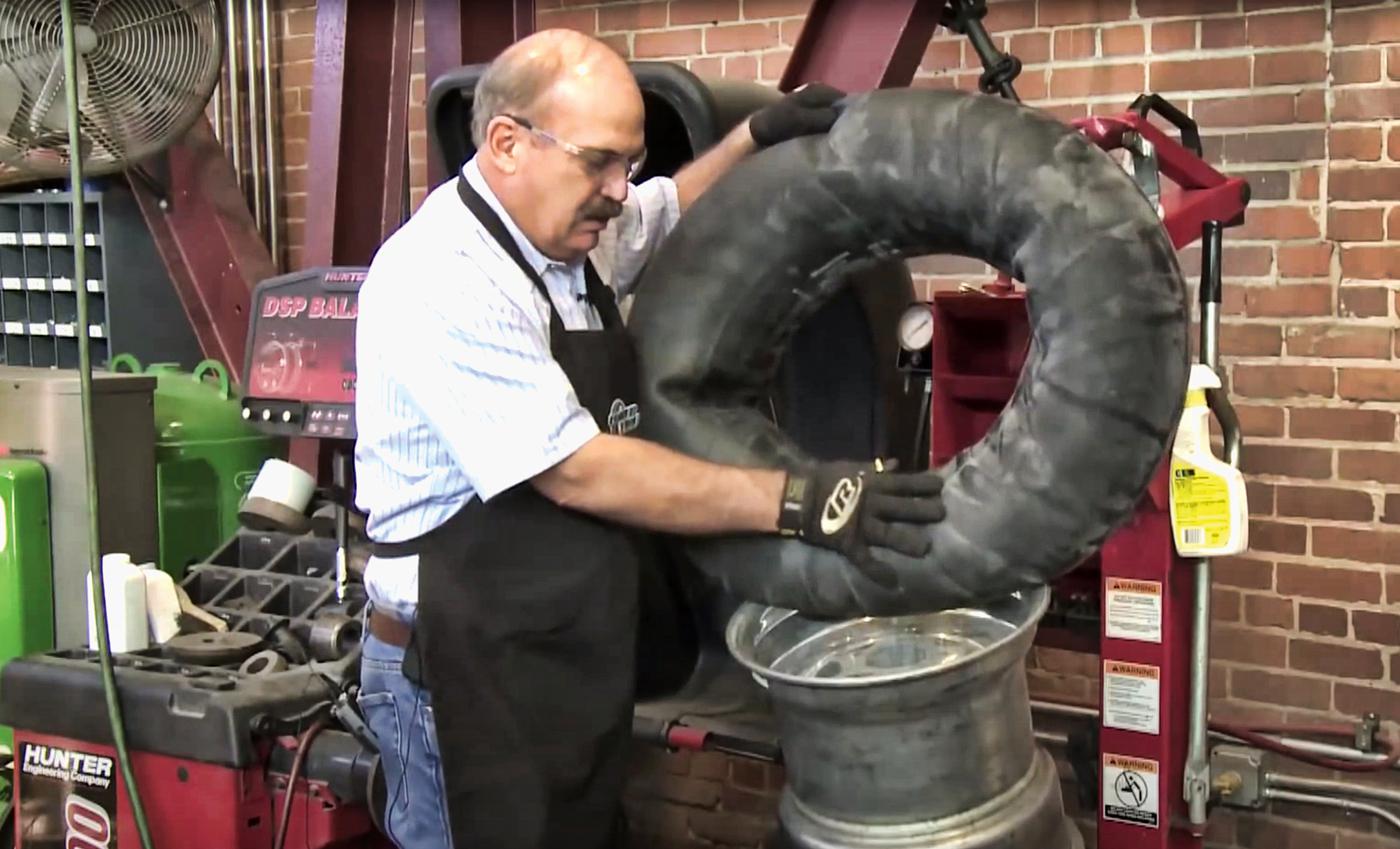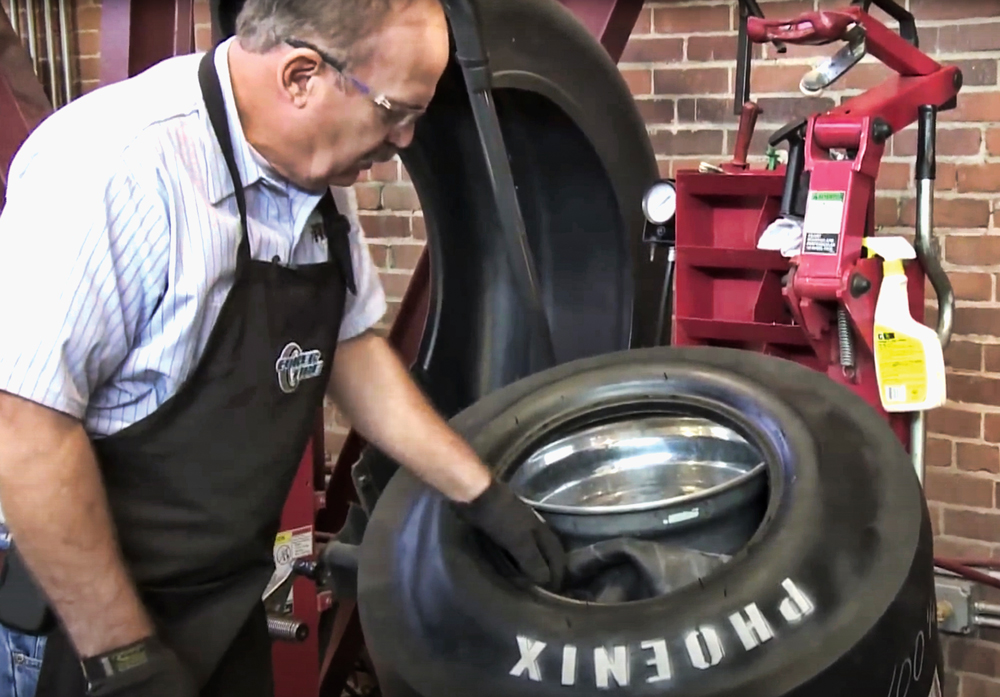Stop Doing That…Do This Instead: Mounting Race Tires

Racing tires require a gentle hand when mounting, because they’re generally softer and gummier than street rubber, according to our sources.
This essential yet often overlooked component to race preparation is easy enough to master when following the correct procedures.
It’s hot. It’s late. And the hauler isn’t even fully loaded yet to head for the track. Part of the hurry-up, to-do list may involve racking some fresh rubber for the night. Like everything else, it has to be done quick.
Right there, stop, because that kind of thinking is asking for trouble. A lack of proper focus, or the right procedures, when mounting race tires can damage the tires, the wheels and, potentially, a lot more than that. This essential, but sometimes overlooked, element of race preparation is quite easy to get right when following the correct practices. Ideally, they need to start before reaching for a tire.
The wheel is no less critical than the tire when it comes to proper mounting practices. First, make sure that the wheel is fit for competition in the first place. Any racing wheel is subject to loading and impacts that can lead to damage. Damage can also result from incorrect mounting practices. John Harris, trackside service manager at Appalachian Race Tire in Maryville, Tennessee, said his crews see bead damage and scarring on wheels, especially those sent to non-trackside shops without the right experience. He stressed that wheels should always be inspected for cracks and other damage, with wheel weights removed and rubber marbles scraped away, making sure no debris is stuck in the barrel. Any such excess can inhibit the mounting equipment from properly gripping the rim, and possibly damage the tire’s bead or sidewall.
Harris advised that tire mounting should become a regularly practiced team discipline. It can take time for the manufacturer’s crew to handle mounting at the track on a race night. To compensate, Harris recommends racers invest in second and even third sets of wheels, to create a “Race, Spare, In-Service” cadence. Tires should be dismounted on a regular schedule so the wheel’s bead surfaces can be cleaned—using Scotch-Brite pads and brake cleaner, Harris suggested—of dried mounting lube and corrosion. A less-than-clean wheel can also be difficult to balance properly because weights may shift.

Racing tires require a gentle hand when mounting, because they’re generally softer and gummier than street rubber. Mike Crutchfield of Phoenix Race Tires in Chattanooga, Tennessee, said demounting any race tires requires care, and plenty of soapy water, to prevent damage. That’s because the wheels usually have a deep drop center and safety lock or hump to negotiate. “The difference in the physical size compared to street tire/wheel combos makes for a more challenging process when trying to use a standard tire machine.”
Too much lubrication, like most things done to excess, can pose its own problems when tires are being mounted. Toyo Tire USA Corp. of Cypress, California, completed a performance test of four tire brands, including its own, after mounting and balancing them using a Hunter GSP9700 machine. The tires were mounted on OEM steel or aftermarket chrome wheels using a paste lubricant on the bead and seating area. By indexing the valve stems to the rims, Toyo confirmed that excess lube caused the tire to slip on the wheel, by 3 inches in one case.
Harris said that Appalachian Race Tire uses a very limited amount of lubricant, either Magnum Super Lube or Tip Top Paste, and mounts tires dry if it’s within manufacturer specification.
Crutchfield said the lubricant should be applied only to the wheel’s bead sole, using a sponge, while keeping the bead lock area and outer rim dry.
Both Crutchfield and Harris repeatedly stressed the importance of following manufacturer guidelines for mounting, even in seemingly obvious cases like directional tires. Crutchfield said he’s seen drag racing competitors neglect to install tubes, against factory guidance to use the tire with drag-approved tubes only. Another problem is installing the tube upside down by putting the valve stem in the wrong location. That can cause the tire to appear deformed, with lumps and soft spots across both the sidewall and tread.
Proper inflation practices are crucial. Harris said Appalachian recommends that tires be inflated only with compressed air that has been passed through a desiccant-based drying system or, better yet, compressed nitrogen, to best reduce humidity inside the tire. That moisture can lead to inconsistent or spiking pressure levels inside the tires, where internal temperatures can surpass that of boiling water under race conditions. A source at Toyo Tires said low-profile tires intended for alloy wheels may require higher mounting pressures because of tighter bead-seat tolerances. If more than 40 PSI is required, Toyo recommends dismounting the tire, re-lubricating and repeating the process.
In Harris’s view, standard balancing and indexing procedures are sufficient for racing vehicles on purpose-built circuits. Eccentricity associated with radial force variation (RFV) generally isn’t sufficiently pronounced to justify specific measurement or corrective adjustments.
Sources
—
Appalachian Race Tire
racetire.com
Phoenix Race Tires
cokertire.com
Toyo Tire USA Corp.
toyotires.com
 MEMBERSHIP LOGIN
MEMBERSHIP LOGIN JOIN PRI
JOIN PRI


